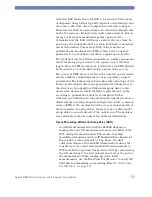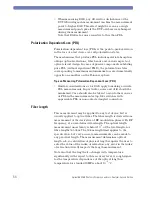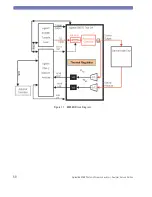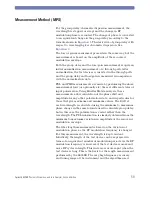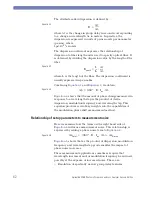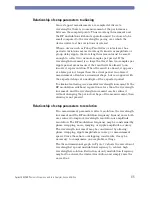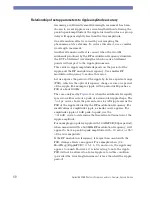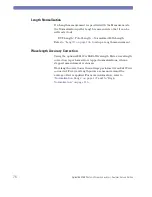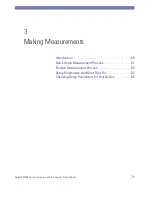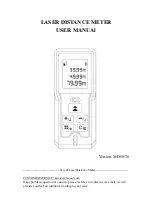
Agilent 86038B Photonic Dispersion and Loss Analyzer, Second Edition
65
Relationship of setup parameters to aliasing
Since stepped measurements are sampled at discrete
wavelengths, there is no measurement of the performance
between the sampled points. Thus wavelength increment and
the RF modulation sideband separation must be chosen to be
small compared to the wavelength spacing over which the
device under test has variations of interest.
When a device such as Fabry-Perot filter or interleaver has
periodic variations across wavelength, known as amplitude or
group delay ripple, the wavelength increment must be small
enough to collect two or more samples per period. If the
wavelength increment is so large that less than two samples per
ripple period are measured, the result will be aliased to an
incorrect representation. When the result is aliased, it appears
at a false period, longer than the actual period. An aliased
measurement often has an unusual shape, but can appear with
the expected shape at a multiple of the expected period.
To eliminate aliasing, use a smaller wavelength increment. If the
RF modulation sideband separation is less than the wavelength
increment, and the wavelength increment can be reduced
without changing the period or shape of the measurement, then
aliasing is not present.
Relationship of setup parameters to resolution
Two measurement parameters affect resolution: the wavelength
increment and the RF modulation frequency. In most cases both
are reduced to improve wavelength resolution or amplitude
resolution. The RF modulation frequency may be constrained by
phase wrapping, noise, imaging, or ripple amplitude accuracy.
The wavelength increment may be constrained by aliasing,
phase wrapping, ripple amplitude accuracy, or measurement
speed. Since these have overlapping constraints, it may be
necessary to compromise on acceptable settings.
The three-dimensional graph in
shows the selection of
wavelength step and modulation frequency to achieve high
wavelength resolution. Reduction of only modulation frequency
may fail to achieve the desired resolution and simply raise the
noise floor.
Summary of Contents for 86038B
Page 1: ...Agilent 86038B Photonic Dispersion and Loss Analyzer User s Guide ...
Page 4: ...4 ...
Page 20: ...20 Agilent 86038B Photonic Dispersion and Loss Analyzer Second Edition ...
Page 34: ...34 Agilent 86038B Photonic Dispersion and Loss Analyzer Second Edition Figure 2 b Rear Panel ...
Page 78: ...78 Agilent 86038B Photonic Dispersion and Loss Analyzer Second Edition ...
Page 92: ...92 Agilent 86038B Photonic Dispersion and Loss Analyzer Second Edition ...
Page 202: ...202 Agilent 86038B Photonic Dispersion and Loss Analyzer Second Edition End Sub ...
Page 348: ...348 Agilent 86038B Photonic Dispersion and Loss Analyzer Second Edition ...
Page 349: ......





